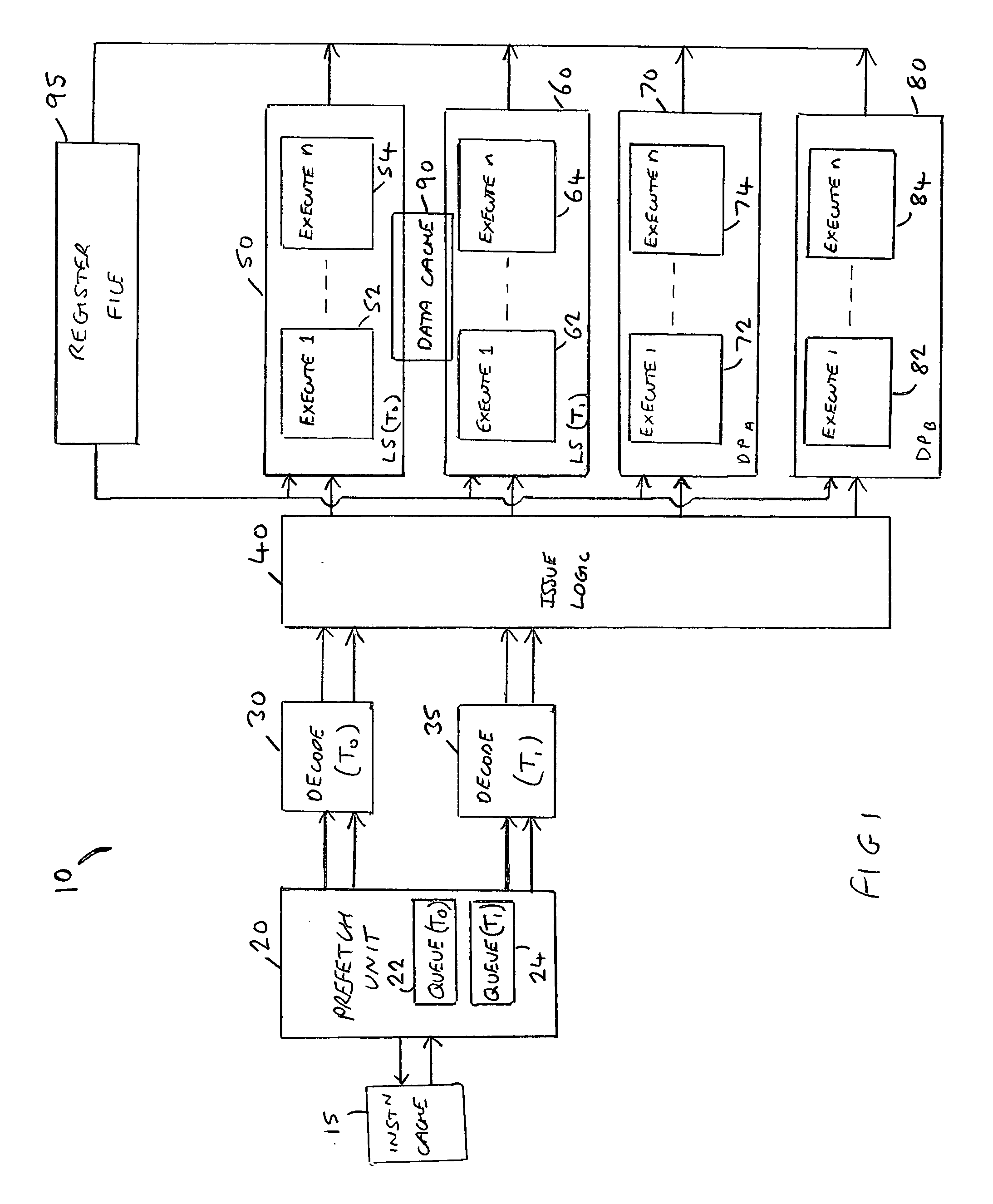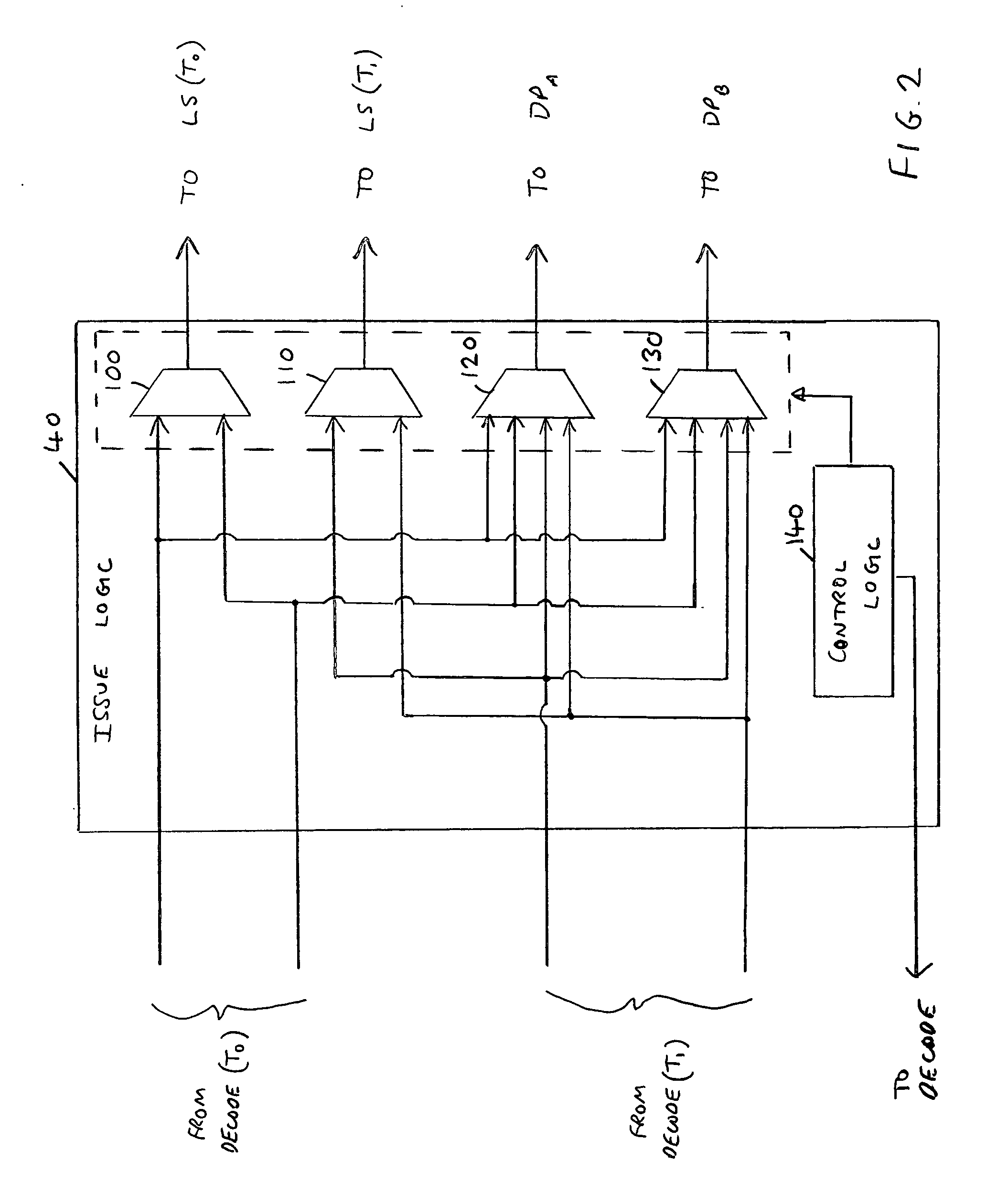Superscalar data processing apparatus and method
a data processing apparatus and superscalar technology, applied in the direction of instruments, specific program execution arrangements, program control, etc., can solve the problems of hazard, address resolution of memory accesses, dramatic underutilization, etc., to reduce the requirements for hazard detection, the effect of minimal performance impact and easy implementation
- Summary
- Abstract
- Description
- Claims
- Application Information
AI Technical Summary
Benefits of technology
Problems solved by technology
Method used
Image
Examples
Embodiment Construction
[0032]FIG. 1 is a block diagram of a data processing apparatus 10 in accordance with one embodiment of the present invention. This superscalar data processing apparatus 10 has four execution pipelines 50, 60, 70, 80, each of which contain a number of pipeline stages 52, 54, 62, 64, 72, 74, 82, 84.
[0033] As will be discussed in more detail later, the data processing apparatus 10 has multiple execution threads, each of which can process a sequence of operations specified by a corresponding sequence of instructions. In one embodiment the sequence of instructions may be defined by a program thread. Issue logic 40 is used to decide which execution pipeline 50, 60, 70, 80 should execute any particular operation. A register file 95 is provided within the data processing apparatus 10 for storing data required by the various pipelined execution units 50, 60, 70, 80 when executing operations, the data required when processing a particular operation being routed from the register file into th...
PUM
 Login to View More
Login to View More Abstract
Description
Claims
Application Information
 Login to View More
Login to View More - R&D
- Intellectual Property
- Life Sciences
- Materials
- Tech Scout
- Unparalleled Data Quality
- Higher Quality Content
- 60% Fewer Hallucinations
Browse by: Latest US Patents, China's latest patents, Technical Efficacy Thesaurus, Application Domain, Technology Topic, Popular Technical Reports.
© 2025 PatSnap. All rights reserved.Legal|Privacy policy|Modern Slavery Act Transparency Statement|Sitemap|About US| Contact US: help@patsnap.com



